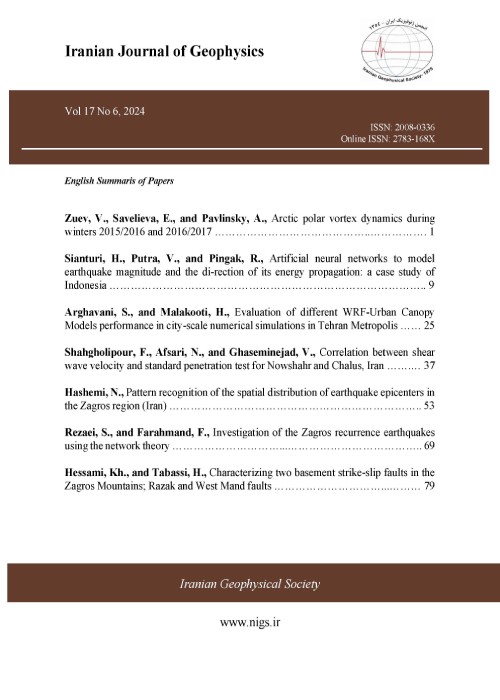Evaluation of unstable points detection methods in geodetic GNSS-based networks
Deformation monitoring is a crucial engineering task for public safety. Any incorrect estimation of displacement rates can cause economical and deadly effects on engineering structures. Three methods have already been developed for structure deformation monitoring in the geodetic community: the single point method, and the robust and combinatorial estimation methods. In this article, the methods were implemented on a simulated dataset of the Global Navigation Satellite System. As a result, the Simultaneous Adjustment of Two Epochs and Multiple Sub Sample using distance differences methods were defined as the most optimal methods to find the stable and unstable points in the simulated network. To show the performance of the methods on a real dataset, the optimal methods were employed on the real GNSS observations collected of a pedestrian steel bridge in Tehran. The GNSS receiver type is LEICA GRX1200+GNSS. Moreover, two scenarios are investigated: all epochs have the same global coordinate systems (Scenario A), and analysis of the earth’s surface movements with the local coordinate system in the first epoch of observations and the global WGS84 coordinate system for the others (Scenario B). The 3-D Helmert transformation was also used to transfer the global coordinate systems to the local one. Scenario B showed better results with a smaller RMS error with an amount of 7e-5.
- حق عضویت دریافتی صرف حمایت از نشریات عضو و نگهداری، تکمیل و توسعه مگیران میشود.
- پرداخت حق اشتراک و دانلود مقالات اجازه بازنشر آن در سایر رسانههای چاپی و دیجیتال را به کاربر نمیدهد.



